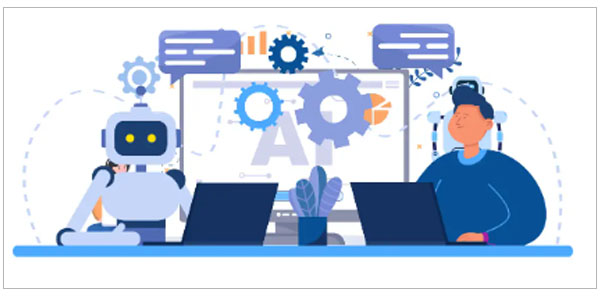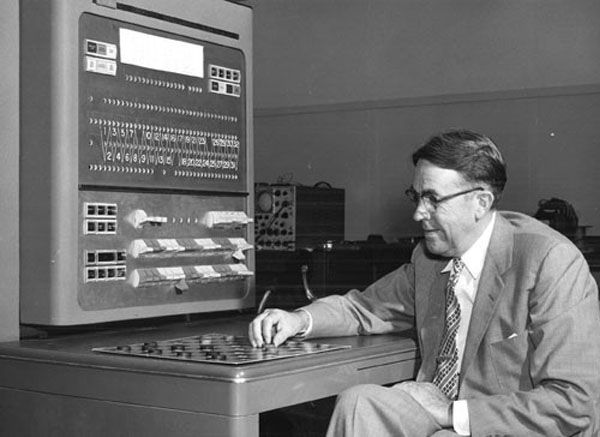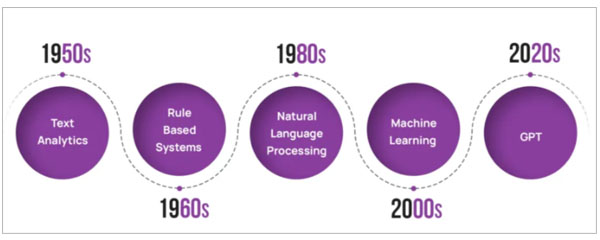Exploring The Potential Of Generative AI In Literature And Storytelling
<alt text: The potential of generative AI in literature and storytelling>
In the vast realm of mankind’s range of creativity, storytelling, and literature, as the world has been progressing, technology has made its special place in these fields.
One of such advancements, known as generative AI, was introduced to the world in hopes of changing the outlook of the literature and storytelling fields.
It is a program that leverages language models, algorithms, and many more elements to create the best quality content within a short span. This is a cost-effective and time-saving method to process the literature works as well as storytelling-based content.
You can now easily do storytelling through the use of AI programs, in which there is a voice feature that can recite the stories on your behalf.
To learn further about its evolution, and impact on the field of literature and storytelling, read the article till the end. Also, learn about Top AI-Powered Alternatives To iMovie in this guide.
Understanding Generative AI And How It Works?

As time passed by, the world has progressively gone through multiple stages of development and innovation with the creative vision. This mainly includes the era of digitalization that’s currently ongoing.
This revolutionary power backup has made the writers much more relaxed and allows them to get as creative as they can.
It is one of the earliest endeavors to be introduced in the 1950s when the field of artificial intelligence was developing.
That era had witnessed the foundational program that would further positively progress and take over the world in every aspect.
In simple terms, Generative AI is an advanced technology that can generate content in several forms like visuals, voice, texts, layouts, or even synthetic data production. This program aims to provide content on 3 key elements for a successful generation:
- Quality (speech quality)
- Speed (in cases of content creation)
- Diversity (appropriate & sufficient data distribution)
It utilizes countless major learning models (Generative Adversarial Networks, Diffusion Model, Variational Autoencoders (VAEs), and so on), Interactive components, and many language tools to work on the literature.
In this manner, it ensures that the generated text can offer creativity, exploration, and engagement.
Listed below are the ways how generative AI works:
- Such models use neuron networks to identify the structures within the existing contents to create an original one.
- As the topic is allotted to the program, the processing starts. It starts gathering data accordingly and tries to summarize it in one go.

Did You Know?
The first machine learning algorithm was developed by Arthur Samuel in 1952 for playing checkers – he also came up with the phrase “machine learning.”
The Evolution And Rise Of Generative AI

Ever since its introduction to the world in the 1950s, the concept of generative AI has been evolving.
Let us understand its stages of development to have a clear picture of how it came to the limelight:
- During the onset of it in the mid-twentieth century, when it was in its fancy stage, researchers used it to explore the possibilities of creating machines to simulate human intelligence.
- Further, as time went by, between the 1960s and 1970s, the research’s focus shifted to knowledge and rules-based systems. The researchers stressed encoding human knowledge and being an expert in computer programming using logical reasoning and the code of conduct.
- Then, in the 1980s, came another program that took the world by storm. Widely known as Natural Language Processing, which is used to date. This program aims to enable machines to understand and generate content in human language. In this manner, it has shaped the way for several translation machines, speech recognition, and several other analyses.
- As the millennium period was over at the onset of the year 2000, there was a significant shift observed in the use of machine learning models in digital data. The algorithms were updated and introduced accordingly. Neuron networks in particular had the most enormous moment in that duration. It is also known as the era of “Big Data” due to the birth of the concept.
- Then came the game-changer programmer named GPT-3 in the 2020s, which is considered a milestone in the field of AI and NLP. Generative Pre-trained Transformer 3 can easily generate relevant and coherent content on the desired topics assigned.
The Impact & Future Of Literature And Storytelling

What used to be a traditional method of reciting stories by reading them out loud and writing the stories/ poems, has been gradually replaced with the use of AI.
The transition from printed books to audiobooks has been quite the journey for the generations since it introduced a new dimension to the world of literature and storytelling.
AI has and will keep on changing and reshaping the standards and expectations with time in hopes of making this much more favorable for writers to leverage such tools.
However, several considerations should be made, and ethical considerations are one of the major concerns. According to research conducted by the University of Alberta, the following are the concerns associated with the use of generative AI:
- Accessibility
- Copyrights
- Plagiarism
- Ownership
- Privacy
- Accuracy
- Rights Management
- Bias
With these considerations in mind, using these AI programs carefully can be a much safer aspect of practicing leverage.
Overall Inputs
Ever since the introduction of generative AI, writers have managed to get more freedom in terms of creativity along with originality.
What used to take months or even years to complete can now be completed within a matter of seconds or minutes due to this program.
It can be used without worrying about grammatical errors since numerous tools scan through the content before processing the structure. There are numerous platforms, the most popular ones such as ChatGPT, Gemini, SEMrush, and many more.
So you can use them without having to worry and make your life easier by adopting them into your daily life of writing and storytelling.
